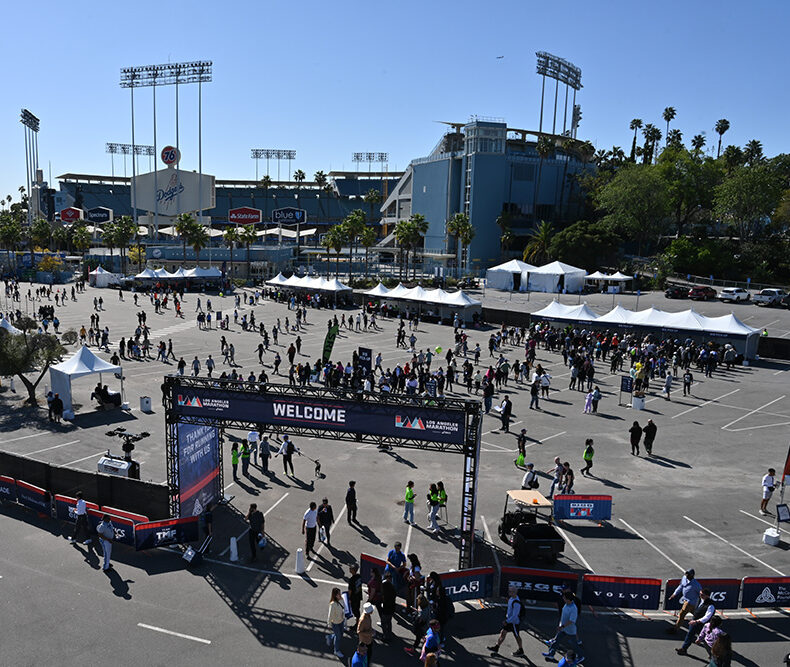“To everything there is a season, and a time to every purpose under the heaven.” Ecclesiastes 3:1
Our training season for the thirty-eighth L.A. Marathon has come to an end. Congratulations to all finishers on March 19, and to every L.A. Legger for completing our thirty-fourth marathon training season. Our 2022-2023 training season concludes on April 8th with our L.A. Legger Brunch at Shutters. Our off-season begins.
What do the LA Leggers do in the off-season?
First, you can sign up for our next season, the LA Leggers’ 2023/24 training season, our thirty-fifth, which begins in August. Membership will open in a few more weeks.
Second, for those who ran the L.A. Marathon, this is the season for recovery. Advice differs regarding the precise duration for recovery; however, a rule of thumb suggests that we recover one day for each mile we race, or 26 days for a marathon. At the least, take several days off, and ease gradually back into your training over the next three to four weeks.
After racing a marathon, participants are at greater risk of both (1) illness and (2) injury immediately following an intense performance. Avoid the urge to return to intense training too quickly.
Third, for those of you who are injured, this is the season to see your sports doctor or physical therapist and follow their advice. Schedule a physical exam. Schedule your screenings and tests. Or schedule a sports massage. Take the time to heal and attend to your care.
Fourth, for those of you now hooked on running, this is the season to think about new goals and plan for new races. Some of you may wish to qualify for Boston. This is the season to think a year or two ahead, planning your gradual improvement. Others simply may plan to experience new races in exotic locations. Others may plan a group marathon abroad with their running companions.
During your first Legger season, you ran from 1 mile up to 26 miles. Perhaps you found your Goldilocks “just right” zone somewhere in between, or perhaps you want to go farther. In the off-season, we can run different races, at different distances, and train to run at different paces.
Lastly, on Saturdays, our pace groups continue to meet all year.
Our pace group email and Facebook pages are most important during the off-season. Our pace groups may try Saturday fun runs of their own devising and may meet at different locations and times. Invite your pace group for a run in your favorite running spot. Pace group emails keep you up to date on events week to week.
We keep going all year. Remember, the L.A. Leggers are an independent, all-volunteer, non-profit public benefit corporation. We promote life-long healthy lifestyles for the general public through running and walking. You need a life-long exercise habit too.
Why run all year?
A regular habit of running and walking can reduce the risk of death associated with sedentary behavior. Sedentary behavior includes the time we spend lying down, sitting, watching TV, sitting in front of screens, with low levels of movement and energy expenditure. Sound familiar?
The Physical Activity Guidelines for Americans, (PAGFA), available at this link: Physical Activity Guidelines for Americans, 2nd edition (health.gov) recommends,
“For substantial health benefits, adults should do at least 150 minutes to 300 minutes a week of moderate-intensity, or 75 minutes to 150 minutes a week of vigorous-intensity aerobic activity….[A]erobic activity should be spread throughout the week. Additional health benefits are gained…beyond the equivalent of 300 minutes.”
Trust me, LA Leggers exceed these requirements. Keep running with the L.A. Leggers to live a longer, healthier, happier life.
Are there alternative physical activities to running?
Yes, and the alternatives to running are listed in the Compendium of Physical Activities, a comprehensive database of the metabolic intensities for all physical activities.
In both documents cited above, metabolic intensity is measured in “metabolic equivalent tasks” or “MET’s.” One MET is equal to our calorie consumption while lying still. “Moderate-intensity” activities fall between 3.0 and 6.0 METs, while “vigorous-intensity” activities have METs over 6.0, that is, more than six times our calorie consumption while lying still.
The danger you face.
Imagine, during the off-season, you are engaged in “activity code 07010, lying quietly and watching television, 1.0 MET,” when someone-you-know-well (“SYKW”) suggests, “Now that the LA Leggers are in the off-season, this Saturday, why don’t you join me in ‘activity code 06160, painting inside house, wallpapering, scraping paint, 3.3 METs, instead?’”
And although you bleat, quite lamely in my opinion, “But it’s my recovery day,” certainly SYKW’s response will be, “Why? You ran with the 9’s, ‘activity code 12060, running, 6.7 mph (9 min/mile), 10.5 METs. I’m only asking you for 3.3 METs,’” and SYKW knows your finishing time in the marathon too.
Be warned. In this compendium, as a marathon finisher, there are few activities you are not prepared for, fitness-wise. While you possibly may convince SYKW that you cannot do “activity code 04081, hunting large game, dragging carcasses, 11.3 METs”, don’t expect my “recovery day” excuse to protect you when SYKW suggests you join in for “activity code 05027, multiple household tasks all at once, vigorous effort, 4.3 METs.”
My suggestion? Our LA Legger off-season is ideal for accompanying SYKW on “activity code 09106, touring/traveling/vacation involving walking, 3.5 METs.” The choice is up to you.





